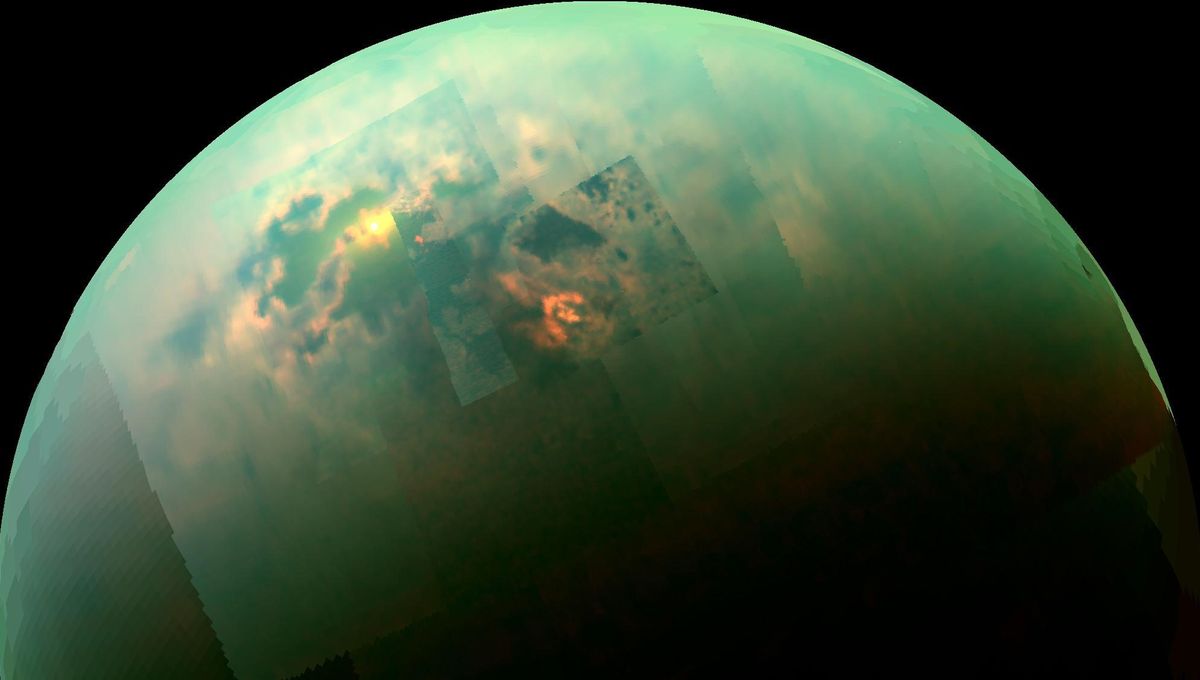
Titan is the only other place in the Solar System with rivers, lakes, and seas. But they are unlike anything on Earth. They are not made of water, but of liquid hydrocarbons, mostly methane. On the surfaces of those seas, observations from orbit spotted bright spots lasting between a few hours and several weeks. These are the “magic islands”, and researchers might have finally understood what they are.
The first suggestions after they were discovered in 2014 were waves, bubbles of nitrogen gas, or solids, either suspended or floating on the surface. The first is not really a feature on Titan. Waves are at most a few millimeters tall, making these bodies of liquid peculiarly smooth.
The new work focused on the interaction between the formation of solids in the atmosphere and what happens when they end up in the lakes. A lot of organic compounds form in the thick atmosphere of the moon, some of which fall down onto sandy hills, and onto rivers and seas. The question is, would they sink? No – as long as they are porous enough.
“I wanted to investigate whether the magic islands could actually be organics floating on the surface, like pumice that can float on water here on Earth before finally sinking,” lead author Xinting Yu, from the University of Texas at San Antonio, said in a statement.
A lot of simple organic molecules land as solids once they have formed in the atmosphere of Titan, including molecules such as benzene. The liquid methane and ethane that make up the rivers and lakes have a low surface tension, so solids struggle to float on them.
“For us to see the magic islands, they can’t just float for a second and then sink,” Yu said. “They have to float for some time, but not for forever, either.”
So the model looks at porous solids like pumice stone, full of holes or tubes where methane can slowly seep in, which would allow for these solids to float over the liquid features of Titan. The magic islands would not simply form in the middle of the lakes but by the shores, where they could get to a significant size before calving and floating away.
“By looking at how long the materials will float for each scenario, our study suggests that the magic islands might be made of large chunks of porous organic solids,” the team wrote in the paper.
And that is not all. The presence of a frozen solid coating on the surface of the lakes and rivers would help explain their smoothness, solving a second mystery for the price of one.
The study is published in the journal Geophysical Research Letters.
Source Link: We May Finally Know What Those "Magic Islands" Are On Saturn's Moon Titan